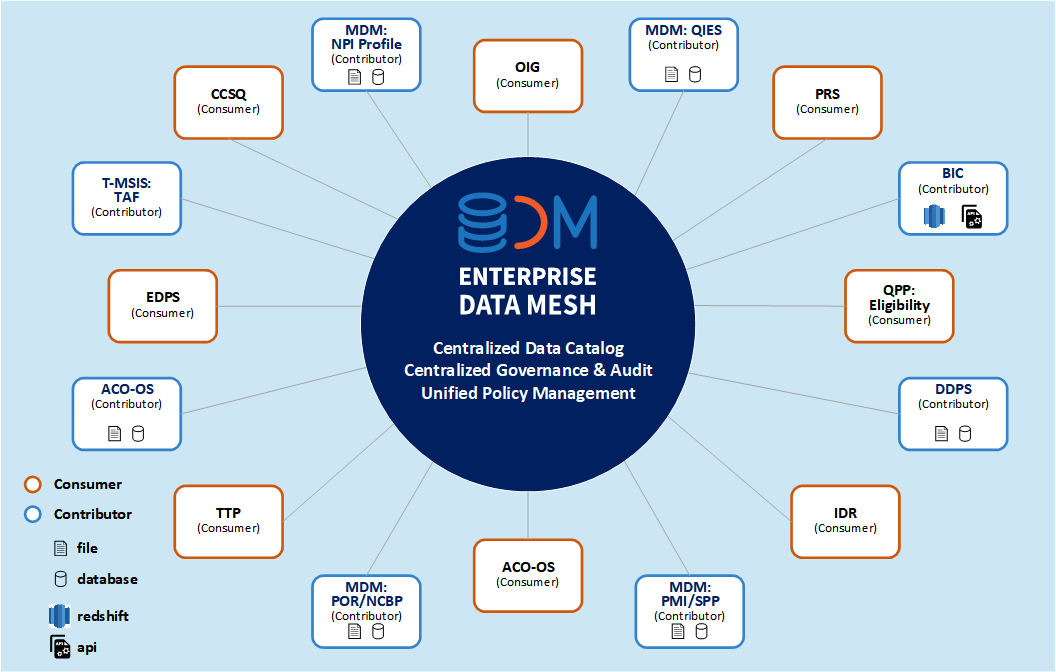Purpose
The Enterprise Data Mesh (EDM) is a data platform architecture that embraces the ubiquity of enterprise data through a domain-oriented, self-service design. The EDM creates a layer of connectivity that abstracts away the complexities of connecting, managing, and supporting access to data. At its core, it seamlessly stitches together data from multiple silos, connecting distributed data across diverse locations and organizations. This data mesh ensures that data is highly available, easily discoverable, secure, and interoperable with the applications that need access to it.The Enterprise Data Mesh is designed to tackle data management challenges at CMS; it places a significant emphasis on facilitating access to data in its original locations, avoiding the need for unnecessary data movement and replication across systems. This approach seeks to decentralize data architecture, eliminating the requirement for centralizing data in a single repository. Instead, it establishes a network of data products distributed across various business domains, fostering a more scalable, resilient, and accessible data ecosystem that aligns with the dynamic nature of modern enterprises.The figure below shows the consumers of the Enterprise Data Mesh as well as its various data sources. Enterprise Data Mesh Components
Enterprise Data Mesh ComponentsObjectives
The objectives of the Enterprise Data Mesh Initiative are:
Establish an Enterprise Data Mesh focused on structured data. 99% of CMS business data about claims, beneficiaries and providers is structured data.
Leverage segregation of storage and compute and apply scalable compute as needed.
Support a wide spectrum of CMS use cases from Warehousing, Querying, Business Intelligence, Analytics and APIs by bringing the appropriate compute to the data.
Provide connectivity to relational data structures that with which consumers are currently familiar.
Enable/ free-up data owners and data curators to focus on data and data quality while letting consumers decide consumption mechanics and compute.
Eliminate unnecessary data movement and redundant copies of data sets across the enterprise and simplify operations for data creators and consumers.
Avoid data swamps and puddles. Data connectivity through the Enterprise Data Mesh should be immediately and readily available on a self-service basis to authorized users without the need to ingest, import, export or be constrained to a specific tool.
Use open-source first and engineer to prevent technology, cloud, and vendor lock-in.
Provide a metadata layer that allows consumers to view the data mesh as an integrated data set.
Enable consumers to bring their own computes, analytics, and APIs to the data.